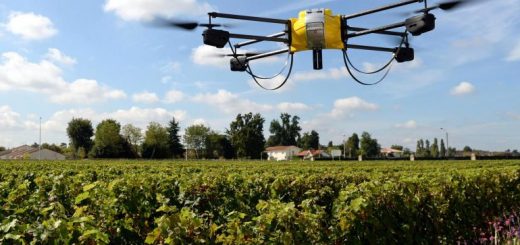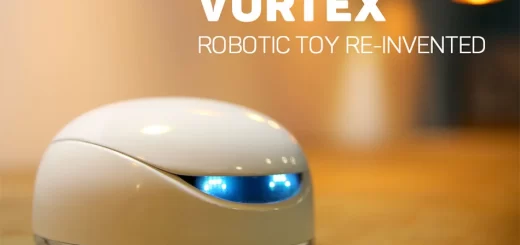BTECH Humanoid Robot Walker review, advantages, disadvantages and features
Walker robots can traverse rough terrain better than wheeled robots because their legs can adapt to uneven surfaces and obstacles. This makes them ideal for search and rescue operations in disaster zones or exploration on uneven landscapes.
BTECH Humanoid Robot Walker
Depending on the design, walker robots can manipulate objects, climb stairs, and perform other tasks that wheeled robots struggle with. Walker robots can provide more stability than some wheeled robots, especially on uneven ground. This can be important for tasks that require precision, such as bomb disposal.
UBTECH Walker S robot
Being a smaller humanoid robot, the Walker S might be designed for navigating home environments and performing light tasks. It could be a fun and engaging tool for teaching children about robotics, coding, and STEM concepts. The Walker S might be able to understand voice commands and respond to gestures, making interaction more natural.
Perhaps the Walker S specializes in collaborating with humans on simple household chores. Since it has an “S” in the name, it could be a smaller, more affordable version of the Walker X designed for domestic use. Many humanoid robots are impressive at balancing. the Walker S has a remarkable self-balancing feature that allows it to stay upright on uneven surfaces.
Advantages of BTECH Humanoid Robot Walker
Unlike the Walker X designed for factories, the Walker S might be geared towards domestic tasks. Its humanoid form could allow for basic interaction and household chores like tidying up or sorting objects. The Walker X could be a valuable tool for research and development in robotics, particularly in areas like humanoid movement and human-robot interaction.
The Walker X might be designed for factory automation tasks. Its bipedal form could allow for dexterous manipulation like picking and sorting objects, potentially replacing human workers in hazardous or repetitive tasks. The humanoid form might be less intimidating than industrial robots, allowing for collaboration in specific settings.
The Walker S might be a fun and engaging educational tool for children, teaching them about robotics and coding. It could serve as entertainment with pre-programmed movements or the ability to interact with users. Compared to industrial humanoid robots, the Walker S, if designed for home use, might be more affordable due to potentially less complex functionalities.
The Walker S could be a valuable tool for teaching robotics concepts, programming, and artificial intelligence (AI). Its humanoid form might make it more engaging for students compared to traditional robots. If equipped with the right features, the Walker S could serve as a companion robot capable of basic interaction and entertainment.
Depending on its design, the Walker S might have manipulative arms that allow it to perform simple tasks or interact with objects. Unlike the industrial Walker X, the Walker S might be designed for home use. This could include tasks like light housework, companionship for the elderly, or entertainment.
A smaller, more affordable humanoid robot could be a valuable tool for STEM education or robotics research in universities and research labs. The humanoid form can be more engaging for children or the elderly than traditional robots, promoting social interaction.
Disadvantages of BTECH Humanoid Robot Walker
Compared to industrial robots designed for specific tasks, the Walker robot might have more limited capabilities. It might not be as strong or precise as needed for complex tasks. Proper safety measures are crucial, especially if the Walker S is intended for home use around children. Its movements and potential for tipping over could pose a risk.
Bipedal movement can be energy-consuming. The Walker S might have a shorter operating time on a single charge compared to stationary robots. Humanoid robots, even smaller ones like the Walker S, tend to be more expensive than simpler robots due to their complex design.
The Walker S might have limited functionalities compared to specialized robots designed for specific tasks. The bipedal movement might limit battery life, especially if the robot is designed for extended use.
While potentially cheaper than industrial models, humanoid robots are still likely more expensive than simpler robotic assistants. Humanoid robots can struggle with uneven terrain or obstacles in a home environment.
Humanoid robots are generally expensive due to their complex design and advanced technology. While designed for industrial settings, there’s always a potential for accidents if proper safety measures aren’t in place. The bipedal design might limit its mobility on uneven terrain compared to robots with wheels or treads.
Walker robots are more complex to design and build than wheeled robots. This can make them more expensive and require more maintenance. Walker robots move slower than wheeled robots on flat terrain. The walking motion can be energy-intensive, limiting the operating time of the robot on a single battery charge.
You can follow Science Online on Youtube from this link: Science online
You can download Science Online application on Google Play from this link: Science Online Apps on Google Play
Importance of Eilik, Are Eilik robots worth it? And what can Eilik the robot do?
Emo robot review, advantages, disadvantages, features and What can Emo do?
Fun Facts about Eilik robots, What is Eilik robot for? and can Eilik robot talk?
Top trending topics on Emo robots and What can Emo do?
Eilik Desktop Companion Robot structure, features, use, advantages & disadvantages
Trending topics about Eilik robots in Education, Healthcare, Customer Service and Workplace
Top Trends on Eilik and Emo robots, Emo vs Eilik, who is the best?
Eilik DQ robots review, advantages, disadvantages and specifications




